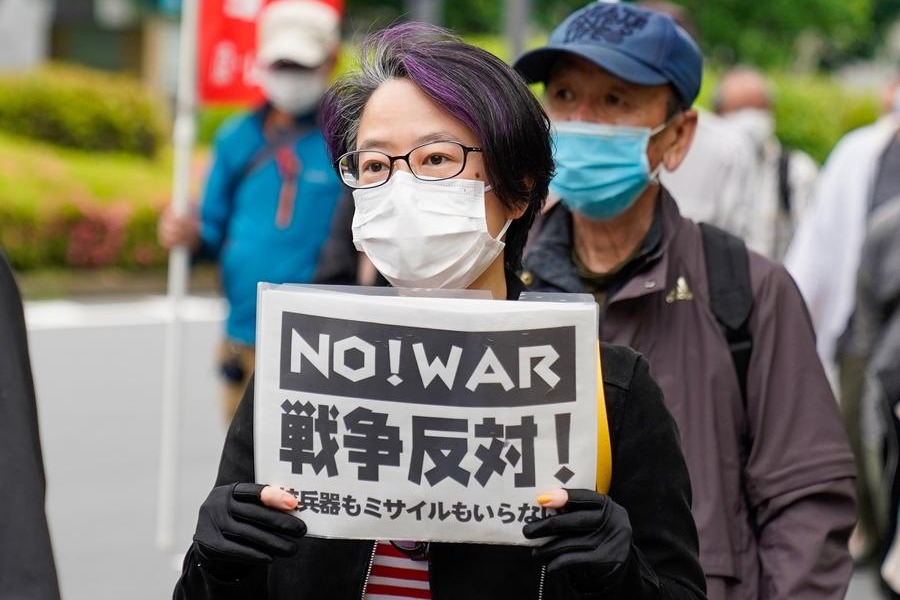BRI powering development across the world


Editor's note: The year of 2023 marks the 10th anniversary of the Belt and Road Initiative. Ten experts share their views with China Daily on how the initiative promotes economic development and improves people's livelihoods.
Initiative has become a game changer globally
The Belt and Road Initiative has become a game changer on many levels globally. It has provided a model for transboundary economic cooperation. Its emphasis on the common goals of development of nations, transcending political, cultural and ideological differences, is a unique feature of the initiative. And the fact that it respects the sovereignty and dignity of the countries involved in the Belt and Road Initiative is an important addition to international relations and global governance.
More important, the Belt and Road Initiative has put the "win-win" concept on the world cognitive map at a time when zero-sum games and the-winner-takes-it-all have become the norm for some major Western economies.
China has presented a world view which believes that "your prosperity is my prosperity", and if your neighbor's house is burning, you cannot be sure of the safety of your own house.
In terms of development financing and goals, the initiative presents an effective and coordinated way of achieving them based on long-term results rather than immediate monetary gains. Also, China believes in helping other countries realize development by building and improving large-scale infrastructure instead of providing them with "aid" which runs off into the sand, perpetuating poverty.
In terms of economic-scientific thinking, the emphasis on clearing the "three bottlenecks of development" in Africa — by filling the financing gap, helping build or improve the needed infrastructure, and addressing the shortage of skilled labour — is key to eradicating poverty and ushering in development.
Hussein Askary is vice-chairman of the Belt and Road Institute in Sweden.
BRI vital to international cooperation, development
The year of 2023 marks the 10th anniversary of the Belt and Road Initiative, which is aimed at improving infrastructure connectivity and serves as a catalyst for economic development and shared prosperity for all by championing multilateralism and global unity.
The initiative stands as a transformative platform in the realm of international cooperation, representing a decade of concerted efforts to achieve win-win cooperation across various domains. The ambitious project, which facilitates policy exchanges and road connectivity, promotes trade and creates jobs.
President Xi Jinping's unwavering commitment to global development and peace deserves commendation, especially because China has been playing a pivotal role in assisting countries in their pursuit of a shared future through Belt and Road projects.
One exemplary manifestation of the Belt and Road Initiative's impact is the China-Pakistan Economic Corridor. Over the past decade, the CPEC has transformed from a concept to a tangible reality, reshaping Pakistan's development landscape. It has not only deepened economic cooperation but also bolstered cultural ties between China and Pakistan. With its focus on development and its inclusive nature, it has helped improve the energy and transportation sectors of Pakistan and other Belt and Road countries.
Indeed, the CPEC signifies a momentous vision, cementing an unbreakable bond between China and Pakistan in their collective pursuit of a human community with a shared future.
China's sincere pursuit of global development goals are exemplary and offer valuable lessons to the world. The international community should look to China as a model of effective collaboration and sustainable development.
Khalid Taimur Akram is executive director of the Pakistan Research Center for a Community with Shared Future in Islamabad.
Connectivity, synergy and opportunities
As connectivity has become a defining feature of a modern economy, it is evident that connectivity needs impetus, planning and proper implementation. The Belt and Road Initiative helps make those connectivity goals a reality.
Evidence abound on the successful endeavors of countries that were wise enough to see the potential beforehand and pragmatic enough to lay the grounds for a cooperation that would benefit all sides involved.
Central and Eastern Europe have seen several such tangible results, including in the Budapest-Belgrade high-speed railway, the Pelješac Bridge in Croatia, the Port of Piraeus in Greece, and hundreds of kilometers of highways throughout the Balkans built with Chinese funding and expertise.
In addition to the short-term impact of infrastructure investment, there are also medium- and long-term effects in strengthening the basis for future economic growth, including making labor more efficient and productive, which for Southern and Eastern Europe means narrowing the gap with wealthier Western Europe.
The world has become a different place since the launch of the Belt and Road Initiative, but the initiative has to evolve to enable countries to capitalize on its strengths and identify its untapped potential. With China's rapid growth and chaotic conditions worldwide, it is of vital importance that the world must understand China's role. The initiative offers a proper lens to see China's approach to global development and its efforts to build a human community with a shared future for mankind.
Marsela Musabelliu is the executive director of the Albanian Institute for Globalization Studies.
BRI filling infrastructure and funds gaps
In the 10 years since it was proposed, the Belt and Road Initiative has become an important global public good, generating tangible benefits for countries including increased investment, job creation and improved livelihoods. The initiative has progressed from a vision to reality, yielding tangible results for Belt and Road countries and their peoples.
Infrastructure development is essential for economic development, and there is a huge need of funds in developing countries to narrow the investment gap. But the lack of proper infrastructure has held up the development of many countries. Better connectivity and deeper economic cooperation are needed to facilitate the development of many countries.
Fortunately, the initiative has been filling the funds and infrastructure gaps in many countries, thus boosting regional and global trade. That's why more than 150 countries and 30 international organizations have already signed the Belt and Road cooperation documents with China.
Sri Lanka, too, has launched a series of development projects under the Belt and Road framework, leading to a huge improvement in its infrastructure. The Belt and Road Initiative is also promoting Sri Lanka's economic growth, creating jobs and improving people's livelihoods.
China is a great friend of Sri Lanka and has always supported the country in safeguarding its sovereignty and territorial integrity. China has also provided much-needed emergency humanitarian aid for Sri Lanka in times of crisis.
Besides, China has agreed to strengthen cooperation with local and foreign companies, and contribute more to Sri Lanka's economic recovery. But some countries have been countering China and the Belt and Road Initiative while proposing many alternative initiatives some of which fail to even take off.
Whether some countries like it or not, the Belt and Road Initiative has been driving infrastructure development globally, and improving connectivity and trade.
Maya Majueran is director of the Belt and Road Initiative Sri Lanka, an independent and pioneering Sri Lanka-based think tank.
Initiative changes the world for the better
It's impossible to overstate just how much the Belt and Road Initiative has changed the world in the decade since it was proposed. In many countries, too many so-called leaders say nice words that people want to hear, but few deliver on the (false) promises they make to lure the people, mostly for votes. Sadly, when the world is facing horrendous problems, such as climate change, global public health, poverty and war, some countries have chosen confrontation over cooperation, ostensibly to perpetuate their hegemony.
President Xi put forward the idea of building a "human community with a shared future" in a speech at the Moscow State Institute of International Relations on March 23, 2013. To turn words into action, later the same year, during his visits to Kazakhstan and Indonesia, President Xi proposed a very significant global initiative, the Belt and Road Initiative.
Oscar Wilde once said that imitation is the sincerest form of flattery. Former US president Donald Trump proposed the now-forgotten "Blue Dot Network", which unsuccessfully tried to counter the Belt and Road Initiative in sectors such as the digital economy, cybersecurity, energy and infrastructure development. Incumbent US President Joe Biden and the G7 have proposed the "Build Back Better World" initiative which one never hears about nowadays, proving that it was only a pathetic attempt to counter China's initiative by trying to ape it. Similarly, the European Union has its "Global Gateway Project" which seems to be a highway to nowhere.
On Jan 17 in 2017, on a state visit to Switzerland, President Xi repeated his call for building a community with a shared future for mankind at the United Nations office in Geneva. Three days later, after his inauguration as US president, Trump said: "From this day forward, it's going to be 'America first'. " Sadly, it still is. With so many existential threats facing humankind, why can't we work together?
Harvey Dzodin is a senior fellow at the Center for China and Globalization.


































